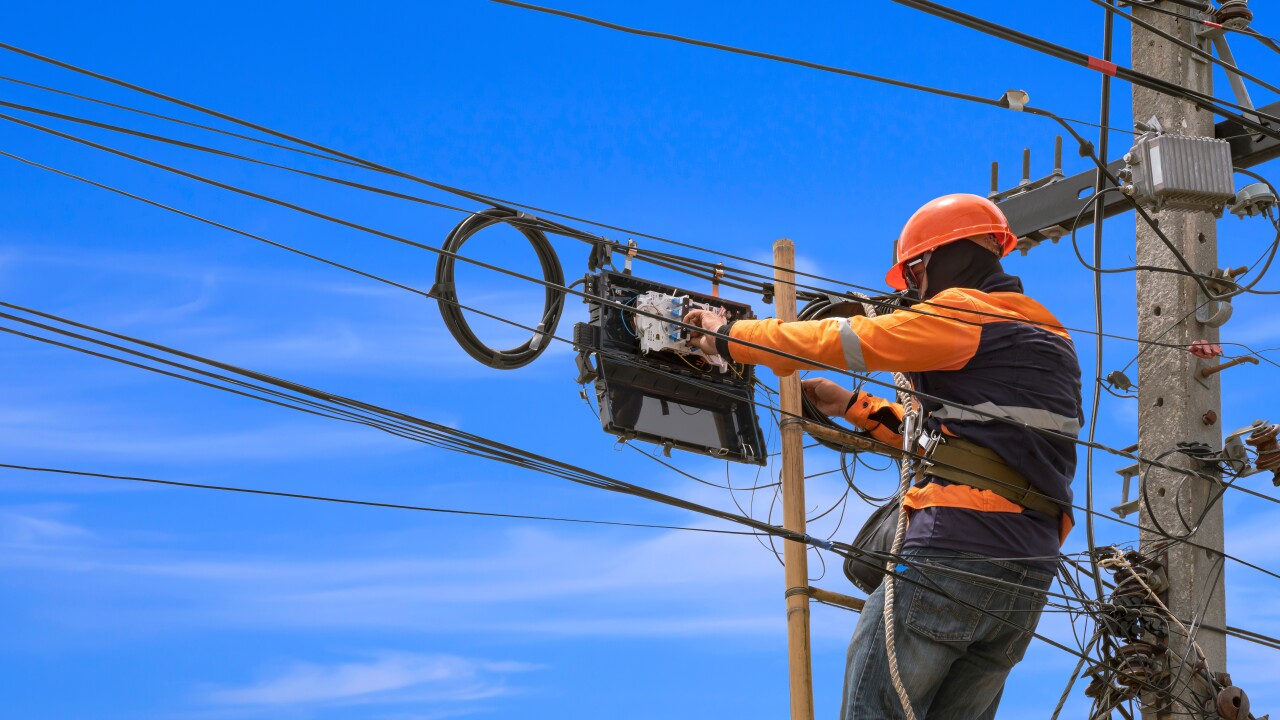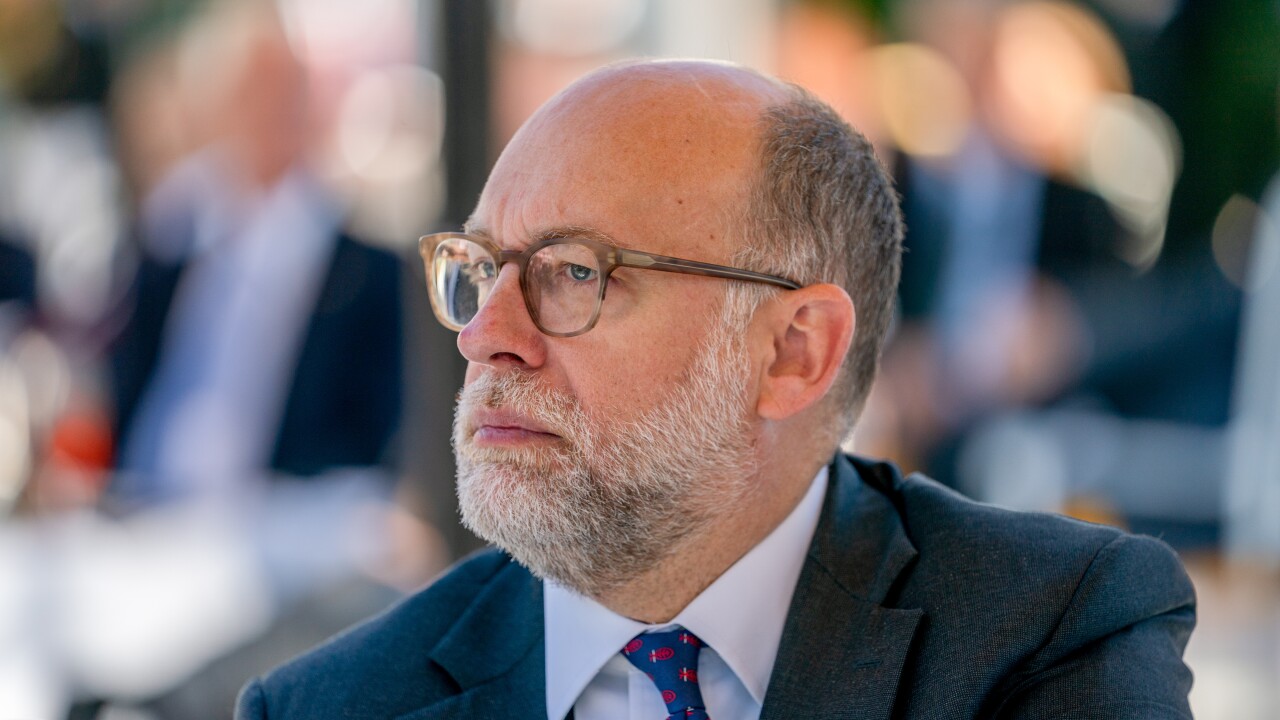Banco Santander’s U.S. holding company has been stressing for months that it is putting its regulatory woes behind it. But that raises the question: So what’s next?
Scott Powell, the CEO of Santander Holdings USA, in an interview at his office Tuesday outlined his vision for the company after years spent dealing with federal and state enforcement and compliance issues.
Powell said he wants to raise the company’s profile with a branding campaign that it began this year. In the longer run he plans to expand the retail side of Santander Bank, the company’s $74.4 billion-asset national bank based in Boston. Growth of the bank’s branch network will be critical to its success, he said.
However, Powell injected a dose of reality into the feel-good message. The company will have to earn regulators’ signoff on acquisitions or branch openings by tying up loose ends in corporate governance. Foremost among them is to assure the Federal Reserve that it has a firm grip on the reins of its beleaguered subprime auto lender, Santander Consumer USA.
“The tail on dealing with these [regulatory] things is kind of long, and we have more work to do,” Powell said. “A big part of our plan is to keep our heads down and keep working on closing all those issues out.”

Yet, as with any plan, there are always unexpected factors to contend with.
The Santander Consumer unit has been a preferred lender of Fiat Chrysler since 2013, but the automaker said in June that it planned to form its own captive finance unit. Santander
Shortly after the announcements by Fiat Chrysler,
In the interview Tuesday, Powell declined to give further updates to Santander Consumer’s relationship with the automaker.
“There’s nothing new to say there,” he said. “They’re very important to us, and no matter how it turns out I think we’re going to be working with Fiat Chrysler for years to come.”
What the overall company can say for certain is that it has resolved a number of regulatory matters in the past year.
In August it
The company has had its share of penalties and settlements, too. Santander Consumer paid $25.9 million to resolve state attorneys general probes in Delaware and Massachusetts of its securitization of subprime auto loans. And in 2016, Santander Bank paid $10 million to the Consumer Financial Protection Bureau for charging improper overdraft fees.
Meanwhile, Santander Bank in April
With that passing CRA grade, which Powell said he would like to raise even further, Santander now can engage in bank M&A and open new branches. Such moves may eventually be in the cards for Santander, but Powell was careful about how he handled that subject, saying that Santander still has to “earn the right” to do acquisitions.
“When you look at the profitability of the bank, we’ve made tremendous progress. Our return on equity is going up, we’ve made great improvements over the last two years, our profits are going up, we’ve made significant gains this year, but we’re still not in a position where we can think about that,” he said. “When we get there in the future — and we will get there — we absolutely will think about opportunities to expand the bank. But we’re not ready to do that just yet.”
The company still has an outstanding regulatory issue to resolve: a 2017 order by the Fed related to compliance and oversight of Santander Consumer.
For now, Santander is focused on transforming its branch network, currently over 600 strong, from traditional bank branches into smaller, advice-based financial centers focused less on daily transactions and more on qualitative conversations with customers.
The company also has a new branding campaign that began in January — which includes a sentimental TV spot featuring a lost piggy bank. Powell characterizes the campaign as Santander’s first real chance to tell the world what kind of bank it is.
And Santander has made a good deal of progress since Powell’s arrival as CEO of the U.S. holding company three and a half years ago, even aside from clearing up its various regulatory matters.
The Santander Consumer unit has begun paying dividends to its shareholders, and for the first time since 2011, the U.S. holding company has been able to return capital to its Spanish parent, Banco Santander.
Voluntary employee attrition has also dropped by fully a third over the past two years, the company says.
Powell was named CEO of Santander Consumer, which is based in Dallas, a year ago. As CEO of both it and the U.S. holding company, he has been working to build bridges between the two.
“They are different companies, but when we put in the intermediate holding company, one of the things we said was that we wanted all the businesses in the U.S. to feel more like one company,” he said.
“We’re never going to integrate Santander Bank and Santander Consumer, but there are things that should be consistent across the place.”
Those things include training, career development and benefits, he said. Some senior leaders have responsibilities in both Boston and Dallas, and there are also a number of strategic initiatives taking place between the two entities. For example, under a new agreement Santander Consumer will originate loans directly onto the bank’s balance sheet while retaining the servicing, the company says.
Santander Consumer also
“I grew up as a risk person, and one of the nice things about getting older is that I’ve seen it before. It is going to happen. I’ve been through two, at least,” he said. “We’re constantly looking for signs [the economy] will change, and there’s lots of metrics we can look at, so the radar’s fully switched on, and we don’t see any signs of that yet.”




